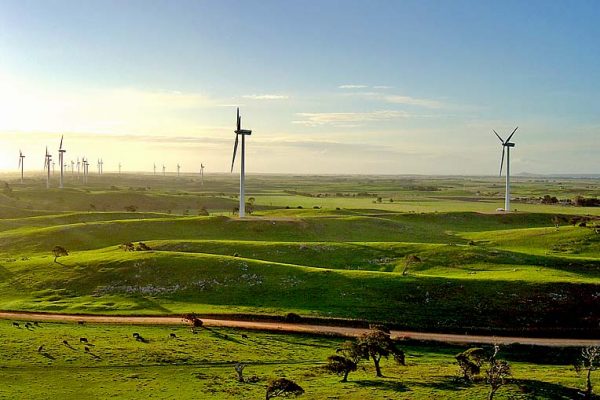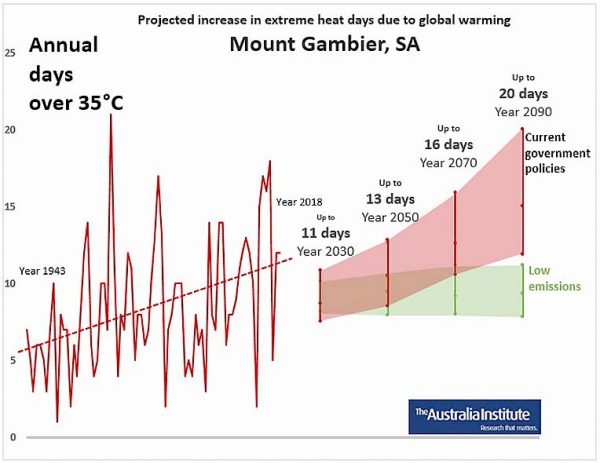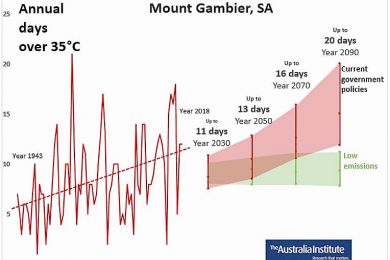

AN alarming new report released today shows Mount Gambier is expected to experience a dramatic rise in the number of extreme heat days unless more is done to tackle “dangerous” global warming.
The authors of the report have also warned rising temperatures will fuel more bushfires, lead to more heat-related deaths and cause more damage to infrastructure and farm land in the South East.
The new research – compiled by The Australia Institute – shows Mount Gambier will experience nearly twice as many extreme days over 35 degrees by 2050 and three times as many by 2090.
According to the researchers, the finding must come as a warning shot to governments to spur more action on climate change.
Given the Green Triangle is home to the largest wood fibre estate in Australia, researchers also warn the increasing risk of bushfires could also affect the important sector.
With Mount Gambier residents sweltering through two consecutive days of 40 degree temperatures last week, the institute’s project manager Noah Schultz-Byard warned “things were only to get worse”.

Institute SA projects manager Noah Schultz-Byard called for more renewable energy projects and less reliance on coal and gas given Mount Gambier could experience five times as many days over 40 degrees by 2090, according to the predictions.
“The South East of our state is already sweltering through summer, year on year,” he said.
“Now we know that, unless we do more to tackle dangerous global warming, things are only going to get worse.”
Mr Schultz-Byard said the report painted a clear picture of the “very real way” that global warming would affect one of South Australia’s key food producing areas.
“More regular heat waves, that are even more extreme, will have a disastrous impact on local productivity, livelihoods, infrastructure, health and the economy,” he said.
The report spokesperson said the risk of more bushfires would have an economic impact on the regional industries such as agriculture and the timber sector.
“We already know the bushfires in South Australia are a major issue,” Mr Schultz-Byard told The Border Watch yesterday.
In Australia, he said heatwaves were a bigger killer than all other natural disasters combined.
“When the temperature reaches 35 degrees or more, our body’s ability to function well and cool itself is compromised. This can cause severe illness including heat stroke and organ damage, especially to the heart, which can be fatal,” the researcher said.
Mr Schultz-Byard said the good news was it was not too late to take action.
“If we reduce our carbon emissions now and take preventative action to limit global warming into the future, we can safeguard local industries and avoid the majority of these temperature increases,” Mr Schultz-Byard said.
“Strong climate policies could also create huge economic opportunities for the region via a proliferation of wind and solar energy projects.”
The Australia Institute’s Heat Watch initiative uses Bureau of Meteorology and CSIRO climate projections.
Construction Forestry Mining and Energy Union Green Triangle secretary Brad Coates said the risk of wildfire to the forestry sector was already significant.
He warned if there were more days of extreme weather events, this could spark more wildfires and destruction of the forestry estate.
Mr Coates said it took the regional industry up to 30 years to recover fully from the Ash Wednesday.









